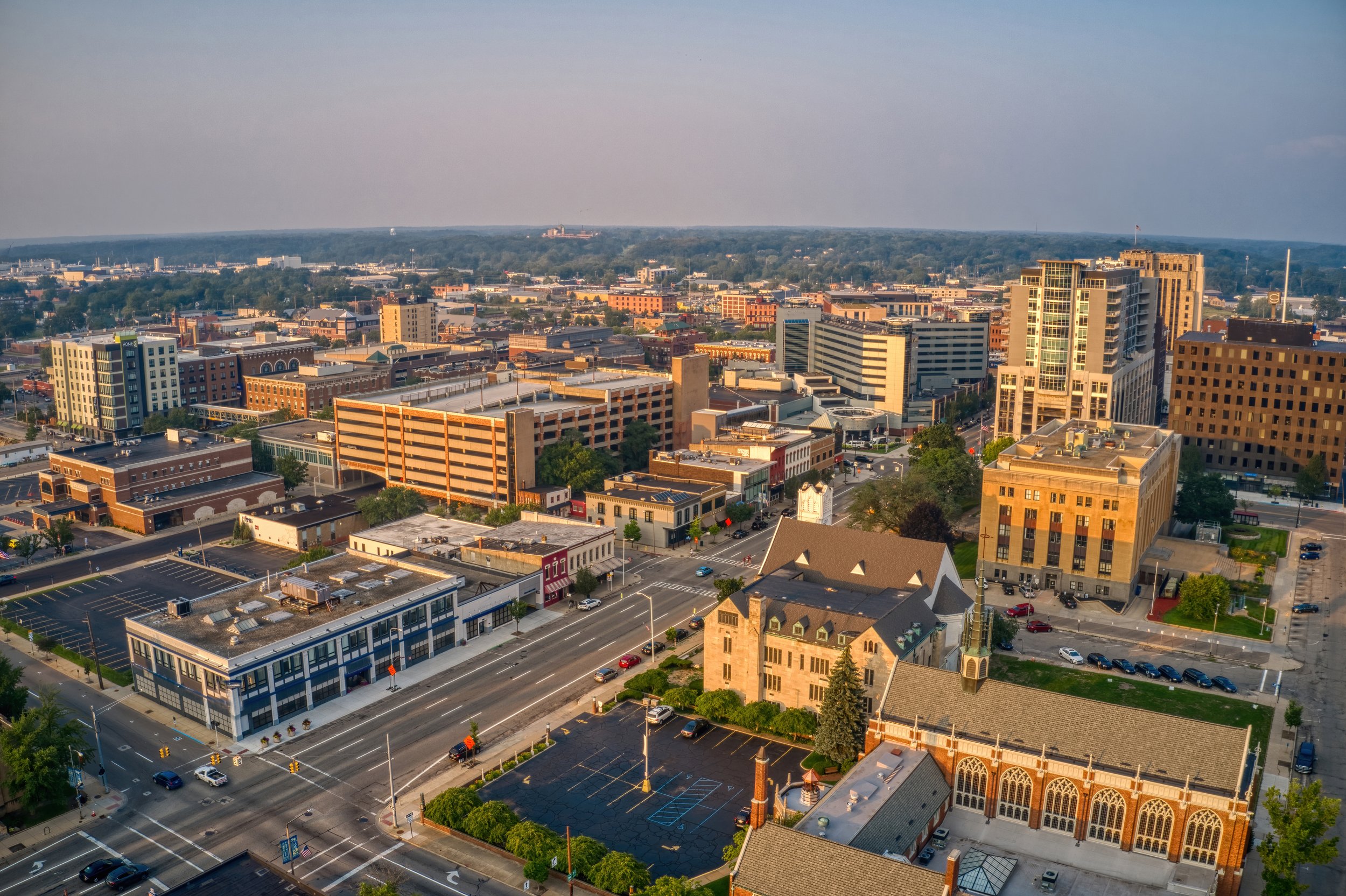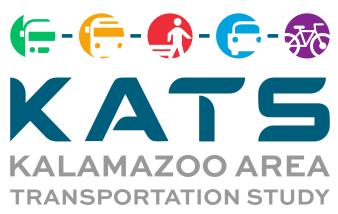
Programs
-
Applying the Right Fix...At the Right Time...In the Right Place
Since 2003, the Kalamazoo Area Transportation Study (KATS), in association with representatives from the Michigan Department of Transportation (MDOT), the Kalamazoo County Road Commission, and local units of government, has conducted PASER road ratings of all Federal Aid Eligible roadways within Kalamazoo County. These ratings have been completed at the request of the State of Michigan's Transportation Asset Management Council (TAMC).
Asset Management as defined in Michigan is "an ongoing process of maintaining, upgrading, and operating physical assets cost-effectively, based on a continuous physical inventory and condition assessment." {MCL 247.659a(1)(a)}. It consists of five major elements:
Developing policy goals and objectives
Data collection
Planning and programming
Program delivery
Monitoring and reporting results
Asset Management involves a shift in thinking away from fixing the immediate and most severe problems in our roadways, to a more strategic assessment that facilitates decisions based on the long range condition of the entire system.
More information about the Michigan Department of Transportation Asset Management Program and the Transportation Asset Management Council can be found here and here.
A map of the most recent PASER ratings for the entire Kalamazoo Area Transportation Study can be seen here: PASER Ratings
Road Condition Report
Kalamazoo County 2021 -
A Congestion Management Process (CMP) is a regionally accepted, systematic approach for managing congestion. It is a multi-modal approach to assess alternative strategies for congestion management and move these strategies into the funding and implementation stages.As a recently designated Transportation Management Area (TMA), KATS is currently developing a Congestion Management Process for the Kalamazoo Urbanized Area.The Congestion Management Process was adopted by the Kalamazoo Area Transportation Study Policy Committee at its November 17, 2021 meeting:
Congestion Management Process for the Kalamazoo Area Transportation Study - Approved
Questions relating to the Congestion Management Process can be directed to KATS at (269) 343-0766 or by email at info@katsmpo.org.
-
The Kalamazoo Area Transportation participated in a nine county non-motorized planning project sponsored by the Michigan Department of Transportation. That plan can be found here:
Southwest Michigan Non-Motorized Transportation Plan.As part of the KATS 2050 Metropolitan Transportation Plan, a Non-Motorized Chapter was included. For a detailed view of non-motorized facilities, please refer to the interactive online map through ArcGIS Online, powered by ESRI.
Survey for local agencies to submit revisions to the non-motorized facilities network:
Non-Motorized Map Edits Survey
Speed Tutorial: Non-Motorized Map Edits Survey
The Kalamazoo Area Transportation Study also participates with several non-motorized planning groups.
The Southwest Michigan Alliance For Recreational Trails (SMART)
More information at: http://www.swmpc.org/smart.aspBike Friendly Kalamazoo
More information at: http://bikefriendlykalamazoo.org -
For almost 50 years, the Kalamazoo Area Transportation Study (KATS) has been the principal agency charged with planning for the future transportation needs of the Kalamazoo Metropolitan Area. Since its inception, KATS has worked to address current issues while also looking toward the future to craft a vision for the region in a long-range plan.
The Transportation Improvement Program (TIP) is the regionally agreed upon list of priority transportation projects, as required by federal law (ISTEA, TEA-21, SAFETEA LU, and MAP-21). The TIP document must list all projects that intend to use federal funds, along with all non-federally funded projects that are regionally significant. The projects are multi-modal; that is, they include bicycle, pedestrian, ITS, and freight related projects, as well as the more traditional highway and public transit projects.
FY 2023-2026 Transportation Improvement Program
FY 2023-2026 TIP (adopted May 25, 2022)
Final Draft of the FY 2023-2026 TIP
Current Project List Application and Instructions for Transportation Improvement Program ProjectsFY 2026-2029 Transportation Improvement Program
FY 2026-2029 Transportation Improvement Program Document (Adopted April 30, 2025)
Open House for the FY 2026-2029 Transportation Improvement ProgramKATS hosted an open house for the FY 2026-2029 Transportation Improvement Program on February 26th, 2025 from 4-8 p.m. Details regarding this open house are found below.
Couldn’t make the open house? Watch the virtual session now!
Virtual Open House RecordingAn online map of the projects is also available.
Comments and questions can be sent via email to mmickelson@katsmpo.org or atownsend@katsmpo.org
This is the KATS Surface Transportation Program (STP), National Highway Performance Program (NHPP), Congestion Mitigation and Air Quality (CMAQ), and Transportation Alternatives Program (TAP) call for projects for the development of the FY 2023-2026 Transportation Improvement Program. The deadline for submission was July 30, 2021.
Funding projections per year for FY 2024, 2025, and 2026 are:
Surface Transportation Program (STP): $3,331,000
National Highway Performance Program (NHPP): $450,000
Congestion Mitigation and Air Quality (CMAQ): $505,299
Transportation Alternatives Program (TAP): $240,000
Due to the lack of a federal transportation bill past FY 2021, these amounts are only estimates. Funding levels will likely change when a new bill is passed.
Projects can be viewed on the online map of the TIP projects.
Application and Instructions for Transportation Improvement Program Projects
*applications are no longer being accepted
This is the draft project list for the highway funding portion of the TIP.
FY 2020-2023 Transportation Improvement Program
Adopted Document 5-29-2019
Application and Instructions for Transportation Improvement Program Projects
Transportation Improvement Program Administrative Modification & Amendment PolicyView the Michigan Transportation Program Portal to see the MDOT Five-Year Transportation Program (5YTP), Rebuild Michigan Program (RBMP), and the State Transportation Improvement Program (STIP).
-
For almost 50 years, the Kalamazoo Area Transportation Study (KATS) has been the principal agency charged with planning for the future transportation needs of the Kalamazoo Metropolitan Area. Since its inception, KATS has worked to address current issues while also looking toward the future to craft a vision for the region in a long-range plan.
The Metropolitan Transportation Plan (MTP) covers a minimum of a 20-year planning horizon. It discusses strategies and projects to develop and maintain an integrated multimodal transportation system. It also outlines the area’s goals for the transportation system. The plan includes road, public transit, and non-motorized facilities and discusses intermodal linkages. The plan must be fiscally constrained and is reviewed, or updated, every four years.
2050 MTP Development
2050 MTP (approved November 17, 2021)
Draft 2050 MTP (posted October 28, 2021)
Public Engagement Presentation For a detailed view of non-motorized facilities, please refer to the interactive online map through ArcGIS Online, powered by ESRI.The following list of projects are proposed for the 2050 MTP. Projects have not been prioritized for funding and are not guaranteed to receive funding.
2050 MTP Draft Master Project List
2050 MTP Draft Capacity Project List
Online Map of Proposed Projects
2050 MTP Project Concept Form (no longer accepting project applications)2045 MTP 2045 Metropolitan Transportation Plan Adopted 4-27-2016
2045 Metropolitan Transportation Plan Appendix E - Travel Demand Model Technical Documentation -
To be eligible for Federal funding for transportation improvements, metropolitan regions must undertake the regional transportation planning process specified in Federal regulations 23 CFR Part 450.314, including development of Unified Planning Work Programs (UPWPs or work programs). The work program for the KATS planning area is developed in consultation with the state, local agencies, and operators of publicly-owned transit services in the region. The work program is developed annually. It defines the planning priorities in the KATS planning area and describes all transportation-related planning activities anticipated within a given program year.
FY2025 Unified Planning Work Program DRAFT
2024 Unified Planning Work Program Amendment (Approved 4-26-23, Amended 4-17-24)
FY2023 Unified Planning Work Program Amendment (Approved 4-20-22, Amended 2-22-23)
-
History
In 2012, Congress passed Moving Ahead for Progress in the 21st Century Act (MAP-21), which changes the way communities must document the allocation and use of federal funds. This direction was further refined in the 2015 Fixing America’s Surface Transportation Act (FAST Act).
Moving Ahead for Progress in the 21st Century (MAP-21)
MAP-21, the Moving Ahead for Progress in the 21st Century Act (P.L. 112-141), was signed into law by President Obama on July 6, 2012. Funding surface transportation programs at over $105 billion for fiscal years (FY) 2013 and 2014, MAP-21 is the first long-term highway authorization enacted since 2005.
MAP-21 is a milestone for the U.S. economy and the Nation’s surface transportation program. By transforming the policy and programmatic framework for investments to guide the system’s growth and development, MAP-21 creates a streamlined and performance-based surface transportation program and builds on many of the highway, transit, bike, and pedestrian programs and policies established in 1991.
Additional information related to MAP-21 is available on the Federal Highway Administration website at http://www.fhwa.dot.gov/map21.
Fixing America’s Surface Transportation (FAST) Act
On December 4, 2015, President Obama signed the Fixing America’s Surface Transportation (FAST) Act (Pub. L. No. 114-94) into law—the first federal law in over a decade to provide long-term funding certainty for surface transportation infrastructure planning and investment. The FAST Act authorizes $305 billion over fiscal years 2016 through 2020 for highway, highway and motor vehicle safety, public transportation, motor carrier safety, hazardous materials safety, rail, and research, technology, and statistics programs. The FAST Act maintains our focus on safety, keeps intact the established structure of the various highway-related programs we manage, continues efforts to streamline project delivery and, for the first time, provides a dedicated source of federal dollars for freight projects. With the enactment of the FAST Act, states and local governments are now moving forward with critical transportation projects with the confidence that they will have a federal partner over the long term.
Additional information related to FAST Act is available on the Federal Highway Administration website at https://www.fhwa.dot.gov/fastact/.
-
For information regarding the Local Rural Task Force Meetings visit the Southcentral Michigan Planning Council - Region 3 website at http://smpcregion3.org/transportation/
The Kalamazoo Area Transportation Study is under contract to the Southcentral Michigan Planning Council (SMPC) for FY 2023 through 2026 to conduct transportation planning activities for SMPC.
Do you need documents translated? Please CLICK HERE.
